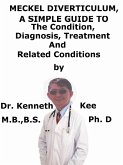>1 cm) above the gastro-esophageal junction and validated histopathologically from esophageal biopsies People with BE have a higher risk for cancer in the area affected. Cancer is not frequent. It is often subdivided into short-segment (less than 3 cm) or long-segment (more than 3 cm) Causes Barrett's esophagus occurs from chronic gastro-esophageal reflux. The metaplastic columnar epithelium is at danger of rising stages of dysplasia resulting in invasive adenocarcinoma of the esophagus The risk rises with longer period of time and raised frequency of gastro-esophageal symptoms. Hiatus hernia is a danger factor and the size of the hernia is linked with the length of Barrett's esophagus Some studies suggest a higher incidence of obesity, smoking and alcohol intake. Risk factors for transformation to adenocarcinoma are: 1.Male gender, 2.Increasing age, 3.Extended segment (>8 cm) disease, 4.Intestinal metaplasia, 5.Duration of reflux history, 6.Early age of onset of GERD, 7.Duodeno-gastro-esophageal reflux, 8.Mucosal damage (ulceration and stricture) and 9.Family history Symptoms BE itself does not produce symptoms. The acid reflux that produces Barrett's Esophagus often results in symptoms of heartburn. Diagnosis The patient may require an endoscopy if GERD symptoms are severe or come back after treatment. During the endoscopy, the doctor may obtain tissue samples from different parts of the food pipe to help diagnose the disorder. They also help look for tissue alterations that could result in cancer. The diagnosis of Barrett's Esophagus needs biopsy verification of specialized intestinal metaplasia (SIM) in the esophagus When high-grade dysplasia or cancer is discovered on surveillance endoscopy, endoscopic ultrasonography (EUS) is advised to evaluate for surgical removal. Treatment Treatment of GERD The treatment should reduce acid reflux symptoms, and may keep BE from becoming worse. The treatment may require lifestyle alterations and medicines such as: 1.Antacids after meals and at bedtime 2.Histamine H2 receptor blockers 3.Proton pump inhibitors 4.Avoiding alcohol and tobacco use Lifestyle changes, medicines, and anti-reflux surgery may reduce symptoms of GERD. Treatment of Barrett's Esophagus The doctor may advise surgery or other interventions to treat BE Some of these procedures can eliminate the damaging tissue in the esophagus: Photodynamic therapy (PDT) utilizes a special laser device, known as an esophageal balloon, together with a photosensitizer drug called Photofrin. Other interventions utilize different types of high energy to damage the precancerous tissue. Surgery to remove the abnormal lining Esophageal cancers occurring in Barrett's esophagus determined by surveillance are often in the early stage and give an excellent prognosis. When surveillance is regarded suitable, it should be done every 2-5 years, depending on the length of the involved segment and the presence of intestinal metaplasia. The treatment of low-grade dysplasia is not obvious It is advised that, after two pathologists have verified the diagnosis, surveillance endoscopy be done every six months. High-grade dysplasia is linked with focusing on the presence of invasive adenocarcinoma in 30-40% of patients. Esophagectomy is often done in severe dysplasia TABLE OF CONTENT Introduction Chapter 1 Barrett's Esophagus Chapter...
Dieser Download kann aus rechtlichen Gründen nur mit Rechnungsadresse in A, B, CY, CZ, D, DK, EW, E, FIN, F, GR, H, IRL, I, LT, L, LR, M, NL, PL, P, R, S, SLO, SK ausgeliefert werden.









